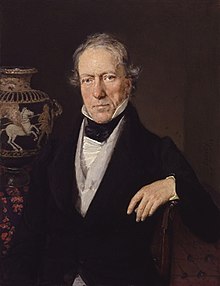Life
Leake was born in London to John Martin Leake and Mary Calvert Leake. Following a family tradition, he joined the British Royal Regiment of Artillery as an officer; he completed his training at the Royal Military Academy, Woolwich in 1794 and was commissioned as a second lieutenant. [2] Having spent four years in the West Indies as lieutenant of marine artillery, he was promoted to captain, and was sent in 1799 by the government to Constantinople to train the forces of the Ottoman Empire in the use of artillery. The British Empire had decided to support the Ottoman in its defence against Napoleonic France. A journey through Asia Minor in 1800 to join the British fleet at Cyprus inspired him with an interest in antiquarian topography. In 1801, after travelling across the desert with the Turkish army to Egypt, he was, on the expulsion of the French, employed in surveying the Nile valley as far as the cataracts; but having sailed with the ship engaged to convey the Elgin marbles from Athens to England, he lost all his maps and observations when the vessel foundered off Cerigo in Greece.
For much of the first decade of the nineteenth century, Leake was employed by the Foreign Office to spy in Greece in the guise of a wandering tourist, with the intent of gathering topographical information which would be useful in the case of a French invasion. Shortly after his arrival in England, he was sent out to survey the coast of Albania and the Morea, with the view of assisting the Turks against attacks of the French from Italy, and of this he took advantage to form a valuable collection of coins and inscriptions and to explore ancient sites. In 1807, war having broken out between Turkey and England, he was made prisoner at Salonica; but, obtaining his release the same year, he was sent on a diplomatic mission to Ali Pasha of Ioannina, whose confidence he completely won, and with whom he remained for more than a year as British representative. He was there in 1809 when Lord Byron visited Ali's court.
In 1810 he was granted a yearly sum of £600 for his services in Turkey. In 1815 he retired from the army, in which he held the rank of colonel, devoting the remainder of his life to topographical and antiquarian studies. He joined the learned Society of Dilettanti and became vice-president of the Royal Society of Literature. He was admitted a Fellow of the Royal Society on 13 April 1815. [6]
He died in Steyning, Sussex on 6 January 1860. The marbles collected by him in Greece were presented to the British Museum; his bronzes, vases, gems and coins were purchased by the University of Cambridge after his death, and are now in the Fitzwilliam Museum. He was also elected as a Fellow of the Royal Geographical Society, received the honorary DCL at Oxford in 1816, and was a member of the Berlin Academy of Sciences and correspondent of the Institute of France.

Thomas Bruce, 7th Earl of Elgin and 11th Earl of Kincardine,, often known as Lord Elgin, was a British nobleman, diplomat, and collector, known primarily for the controversial procurement of marble sculptures from the Parthenon and other structures on the Acropolis of Athens.
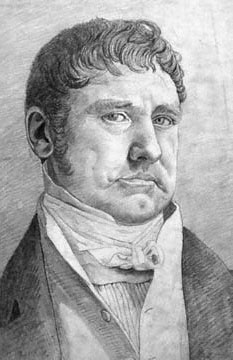
Sir William Gell FRS, pron. "Jell", was a British classical archaeologist and illustrator. He published topographical illustrations of Troy and the surrounding area in 1804. He also published illustrations showing the results of archaeological digs at Pompeii. His best-known work is Pompeiana; the Topography, Edifices and Ornaments of Pompeii, published between 1817 and 1832.

Edward Daniel Clarke was an English clergyman, naturalist, mineralogist, and traveller.
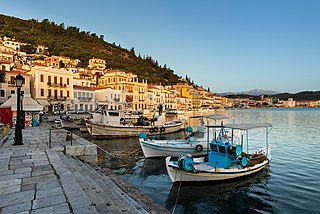
Gytheio or Gythio, also the ancient Gythium or Gytheion, is a town on the eastern shore of the Mani Peninsula, and a former municipality in Laconia, Peloponnese, Greece. Since the 2011 local government reform it is part of the municipality East Mani, of which it is a municipal unit. The municipal unit has an area of 197.313 km2.
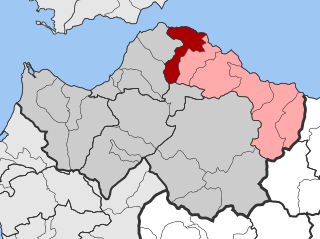
Erineos is a former municipality in Achaea, West Greece, Greece. Since the 2011 local government reform it is part of the municipality Aigialeia, of which it is a municipal unit. The municipal unit has an area of 98.710 km2. Its seat of administration was in the village of Lampiri. Erineos stretches between the northeastern slopes of the Panachaiko mountain and the Gulf of Corinth. The river Foinikas (Phoenix) flows through the municipality. The Greek National Road 8A and the railway from Patras to Corinth run through the municipal unit. It is located about 10 km west of Aigio.
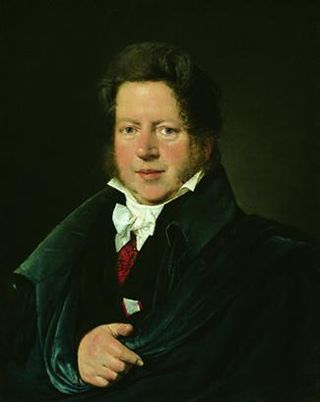
Peter Oluf Brøndsted, Danish archaeologist. He was a professor and rector at the University of Copenhagen. Brøndsted was the first Danish scholar who was involved in archeological work in Greece.

Rhamnous, also Ramnous or Rhamnus, was an ancient Greek city in Attica situated on the coast, overlooking the Euboean Strait. Its ruins lie northwest of the modern town of Agia Marina in the municipality of Marathon.

Kineta is a beach town in West Attica, Greece. Since 2017 it is a separate community of the municipality Megara.
Ziria is a village and a community in Achaea, Greece. It is situated in the hills near the Gulf of Corinth coast, 11 km northwest of Aigio. The community consists of the villages Ziria, Ano Ziria, Kyani Akti, Lampiri, Rodini and Sarkounas. Ziria is part of the municipal unit of Erineos. The community had a population of 769 in 2021. Until 1998, Ziria was an independent commune. It became part of Erineos under the 1998 Capodistrian Plan, and Erineos became part of Aigialeia through the 2011 Kallikratis reform.

Psophis was an ancient Greek city in the northwest end of Arcadia, bounded on the north by Arcadia, and on the west by Elis. It was located near the modern village Psofida, part of the municipality Kalavryta.
Agnaptus was an ancient Greek architect mentioned by Pausanias as the builder of a stoa, or porch, in the Altis at Olympia, which was called by the Eleans the "porch of Agnaptus". When he lived is uncertain.

Kastri is a village of the unit of Evrymenes, Zitsa municipality, Epirus, NW Greece. Until 1950 it was named Siutista, a name still in use by the local people.
In Greek mythology, Alexanor a son of Machaon, and grandson of the Greek god Asclepius, was worshipped as a hero in Titane of Sicyonia, where he established an Asclepieion temple built to his grandfather within a grove densely planted with cypresses. He also built a temple on the summit of Titane in the territory of Sicyon to honor his grandfather, around which there were dwellings for the use of those who came to solicit the aid of the god. Inside this Asclepieion, there were wooden statues (xoana) of Asclepius and Hygeia. Many believed that the statue of Asclepius was the work of Alexanor himself. In his honor, there was also his own statue inside the building.

Teuthis was a city of ancient Arcadia. It is mentioned in Pausanias, who visited and described its temples, and who narrated the elaborate story of King Teuthis' dispute with Agamemnon and goddess Athena in Aulis, prior to the Greek fleet's departure for the Trojan War.

Glarentza, also known as or Clarenia, Clarence, or Chiarenza, was a medieval town located near the site of modern Kyllini in Elis, at the westernmost point of the Peloponnese peninsula in southern Greece. Founded in the mid-13th century by William II of Villehardouin, the town served as the main port and mint of the Frankish Principality of Achaea, being located next to the Principality's capital, Andravida. Commerce with Italy brought great prosperity, but the town began to decline in the early 15th century as the Principality itself declined. In 1428, Glarentza was ceded to the Byzantine Despotate of the Morea, and served as its co-capital, being the residence of one of the Palaiologos despots, until the Ottoman conquest in 1460. Under Ottoman rule, Glarentza declined rapidly as the commercial links with Italy were broken, and by the 16th century was abandoned and falling into ruin. Little remains of the town today: traces of the city wall, of a church and a few other buildings, as well as the silted-up harbour.
Agesarchus was an ancient Greek athlete from Tritaea in Achaea. He was the son of Haemostratus, and won in the men's boxing competitions at all the Panhellenic Games. His victories have been dated around the 165th Olympiad in 120 BC. A statue in his honor was erected at Olympia, the work of the sons of Polycles.
The Alipashiad or Alipashias is an early 19th century epic poem written in Greek by the Muslim Albanian Haxhi Shehreti. The work is inspired by and named after Ali Pasha, the Ottoman Albanian ruler of the increasingly independent Pashalik of Yanina, describing, in heroic style, his life and military campaigns.
Philip Hunt (1772–1838) was an English Anglican priest and antiquarian. Chaplain to Lord Elgin, he is now remembered as a figure in the history of the Elgin Marbles. Hunt applied bribery to acquire antiquities for export to Elgin's collection through agents. He also excavated at the Parthenon.
John Squire (1780–1812) was a British Army officer who rose to become a brevet lieutenant-colonel in the Corps of Royal Engineers during the Napoleonic Wars. Being a writer and diarist who kept journals of his travels, these and his supporting role in some of military campaigning's great moments – Egypt in 1801, South America in 1807, Sweden in 1808, the Netherlands at various stages and Spain in 1811–12 – have made Squire a moderately well-known figure among scholars who study the era.
In Greek mythology, Lyrcus was the illegitimate son of Abas, king of Argos.
